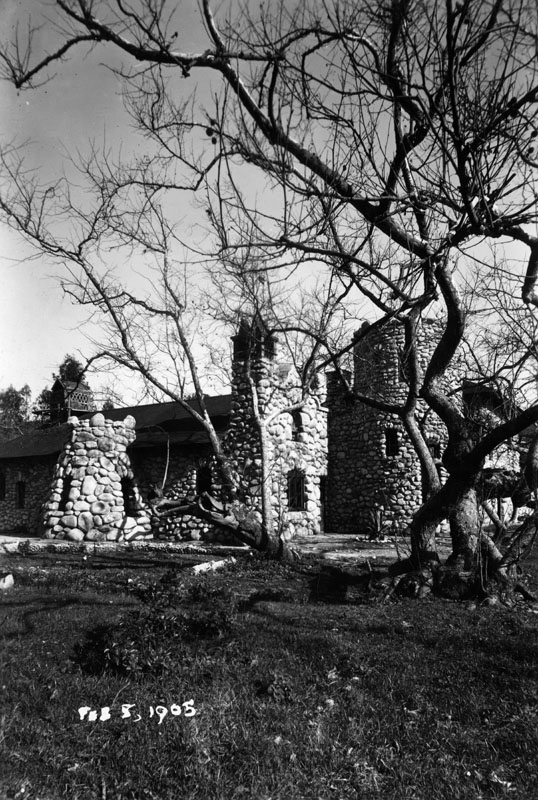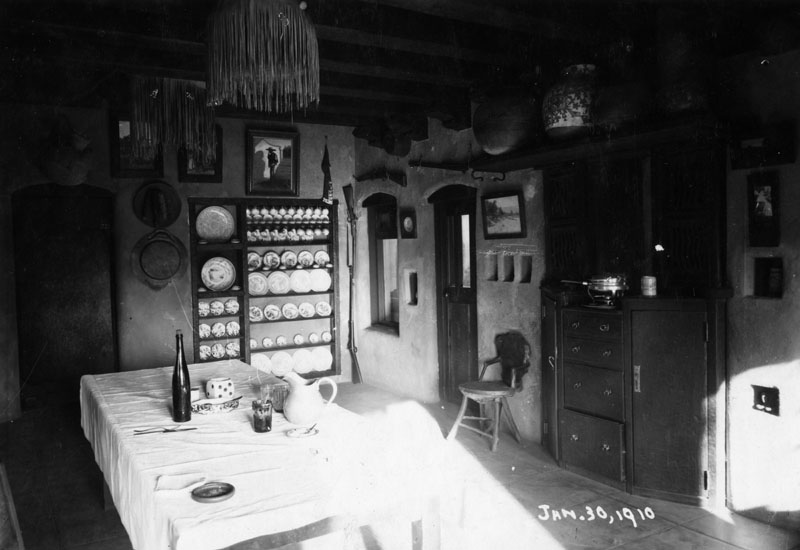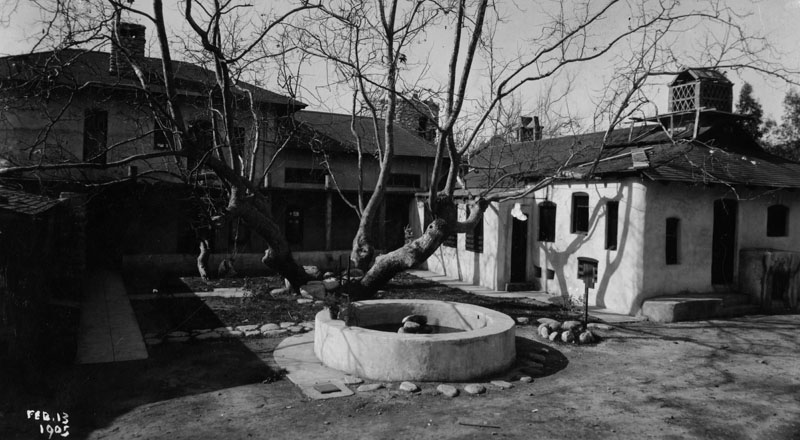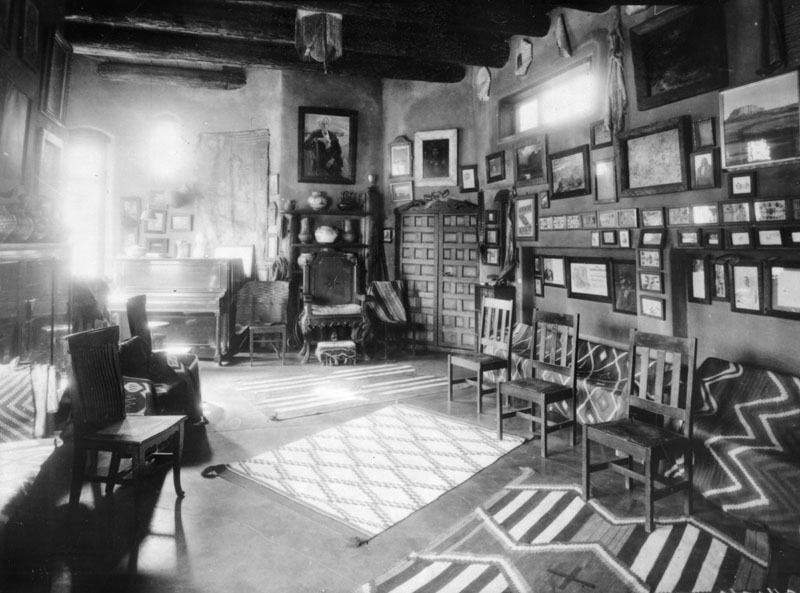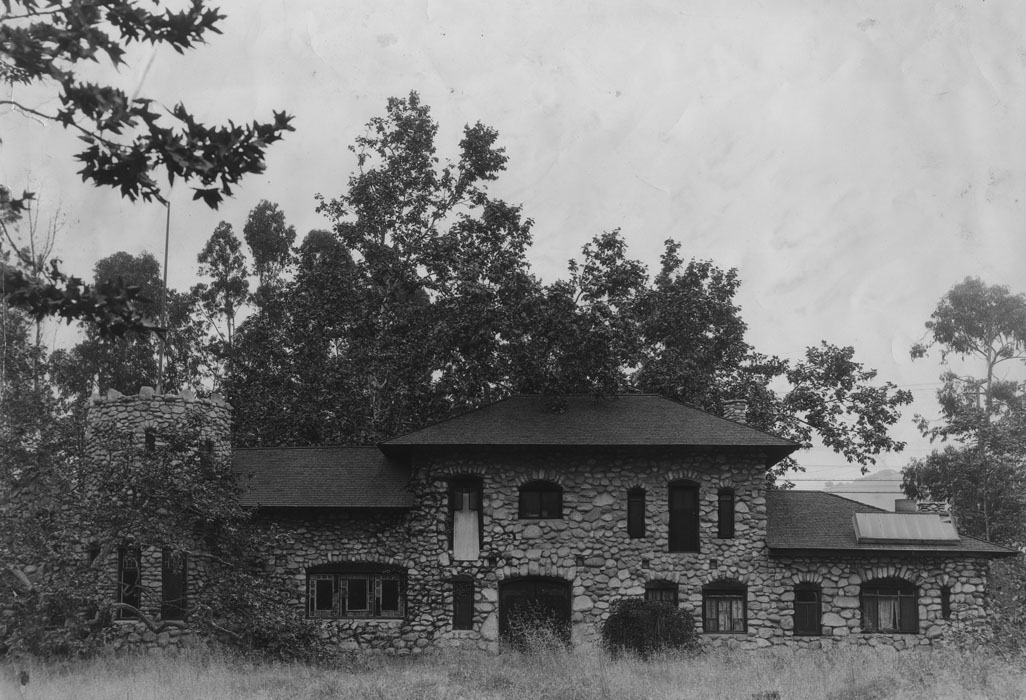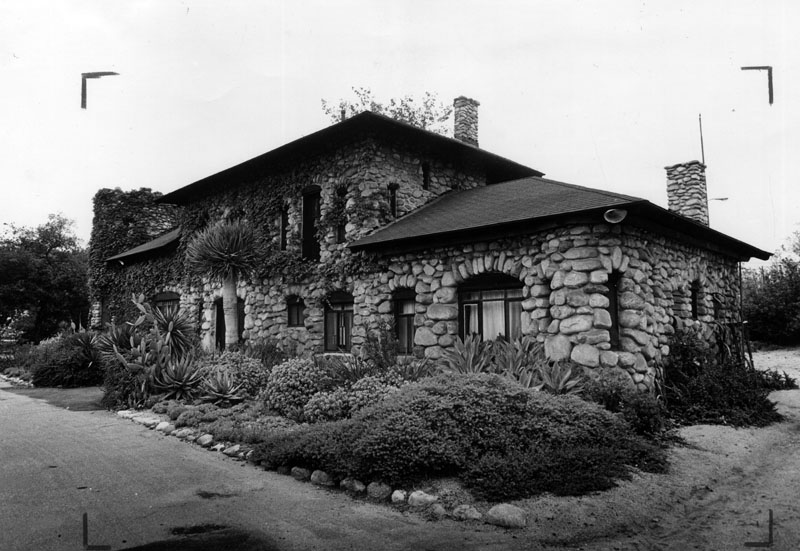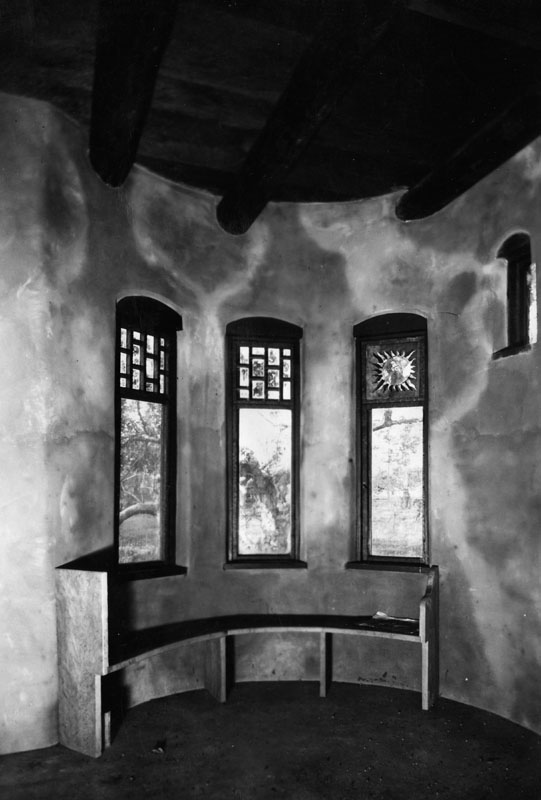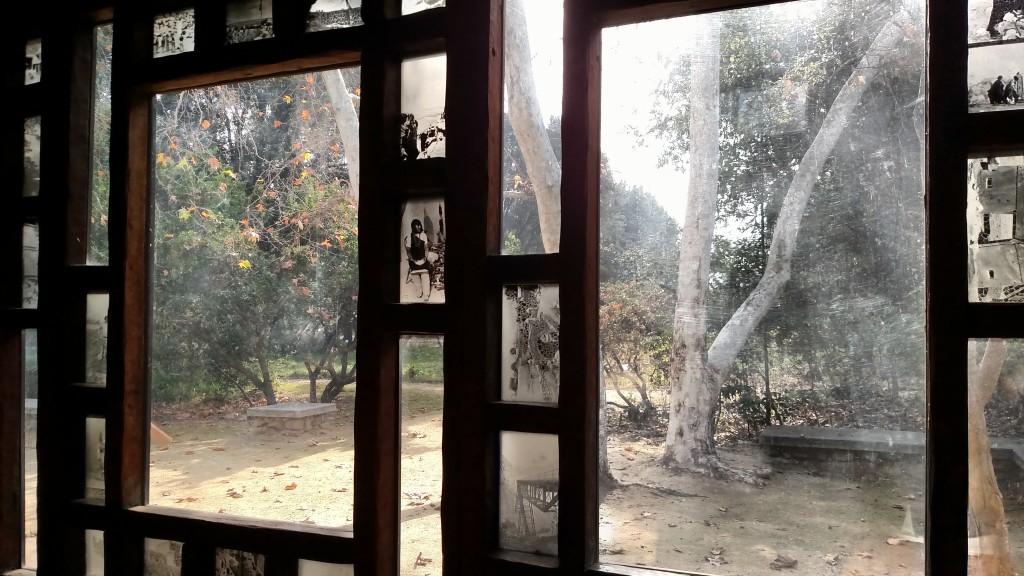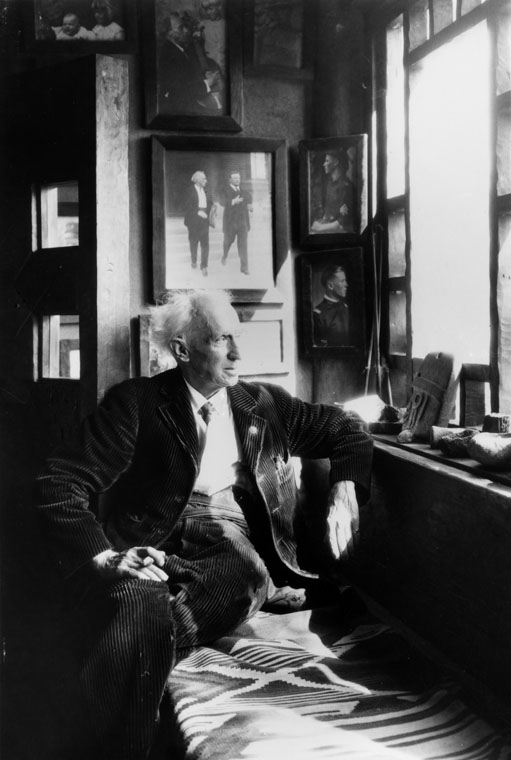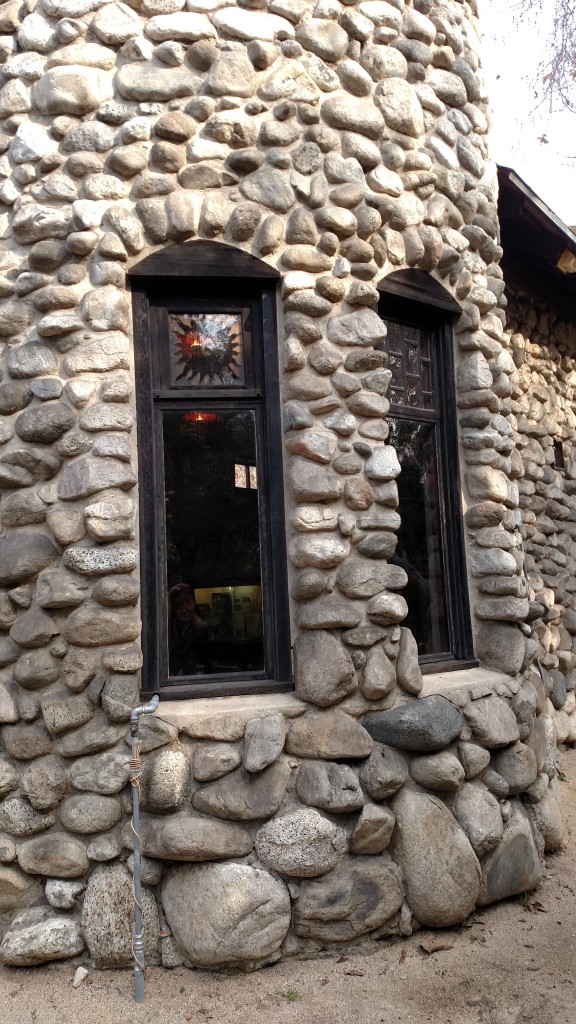Renaissance man Charles Fletcher Lummis (1859 – 1928) designed and built his Highland Park home over a period of some 13 years beginning in 1897, doing much of the labor himself. The name he gave his homestead was El Alisal, place of the alders — or sycamores — or California sycamores. The actual meaning is a bit lost in translation, but the important thing is it was a Spanish name and Lummis loved the Spanish influence in California. He also loved Native American culture and dedicated a portion of his very active life to preserving both.
Much has been written about Lummis the man. We’ll confine ourselves to describing him as a collector, writer, preservationist, founder of the Southwest Museum, advocate for Native American rights, and booster for all things Old California.
One of Lummis’ day jobs was Los Angeles City Librarian. Despite lack of any formal training, Lummis was appointed to the position in 1905 based on his reputation as a “noted scholar and practical leader” (Blitz). In five years Lummis worked to build the library’s collection of rare books and manuscripts, particularly, of course, those reflecting the city’s Spanish heritage. He also found himself embroiled in a boatload of office politics which led to his resignation in 1910. He left behind him the well-established and respected Department of Western History Material.
In addition to collecting books, terra cotta pots and Indian blankets, Lummis collected friends….local and national luminaries from the worlds of art, letters, music, and politics. And he held court at El Alisal.
Security Pacific National Bank, Image #00062061
A Man’s Home
The Los Angeles Public Library’s digital photographic collection contains a number of images of El Alisal over a century of life. Most of the photos are from the Security Pacific Bank Collection and the Los Angeles Herald Examiner Collection. The image above, dated February 5, 1905, taken while the house was still under construction, shows the castle-like embellishments Lummis craved: towers, crenellations, slit windows.
Lummis’ taste for romantic and vernacular architecture is apparent. His design for El Alisal was part medieval castle, part California rancho, part Native American pueblo. Much of his building materials were locally-sourced, including river rock taken from the nearby Arroyo Seco and discarded railroad telegraph poles used as ceiling support beams. The nomination form that successfully placed El Alisal on the National Register of Historic Places in 1971 described it as “a rambling 2-story random rubble stone, masonry and concrete structure,” and noted that the building did not “meet present day requirements of the Los Angeles City Building Code.”
Security Pacific Bank Collection, Image #00062064
The dining room at El Alisal, 1910, displays an eclectic assortment of china and artwork, as well as a pair of muskets mounted on the wall. Many of the pictures and objects displayed in the house were created for Lummis by his coterie of artist friends. Others Lummis collected on his travels throughout the Southwest.
Security Pacific National Bank Collection, Image #00062066
This 1905 photograph shows the backyard courtyard of the home, including a large sycamore and the central lily pond traditional to California rancho style. The kitchen wing is on the right.
Security Pacific National Bank Collection, Image # 00062058
An undated photo of the front room at El Alisal, plentifully adorned with photos, artwork, mission style furniture, and Indian rugs. A portrait of Lummis by Gerald Cassidy, now at the Autry National Center, hangs on the far wall. Lummis was very much a part of the Arts and Crafts movement in California which championed rusticity, natural materials, and folk art.
Los Angeles Herald Examiner Collection, Image # 00047541
This 1949 photograph is an excellent study of the fenestration at El Alisal. Lummis enjoyed designing windows; some windows were placed at child’s-eye level. The same year the Southern California Historical Society took up the idea of turning the derelict building into a museum. Although things did not pan out that way at first, in 1965 the society finally was able to acquire use of the house as their headquarters, in an arrangement with the city that lasted 50 years. SCHS offered docent-led tours of the home’s exterior and a few interior rooms. Safety concerns and the need to use some rooms for offices made a full tour impossible.
Herald-Examiner Collection, Image #00050164
In the 1980s the exterior of the Lummis Home took on a different look as the group Friends of the Lummis Home and Garden took on responsibility for landscaping and maintaining the surrounding acreage. Lummis’ rough two plus acres were transformed into a demonstration garden of drought tolerant plants. The image above shows an editor’s crop marks indicating that the photo was destined for publication, probably in the Herald-Examiner.
Security Pacific National Bank Collection, Image #00062085
An undated interior shot of the ground floor tower niche shows Lummis’ own glass photographs used as small window panes. The photographs in this set of windows are now gone; however, others exist in the main room of the house and make fascinating viewing (below).
Security Pacific National Bank Collection, Image #00031210
The King in his Castle
Lummis in his “Lion’s Den”: the framed photo of him with Teddy Roosevelt taken during the president’s visit to Los Angeles in 1912. This image was probably captured toward the end of Lummis life; he died in 1928 at the age of 69. His home survives in the care of the Los Angeles Department of Recreation and Parks and is open for public tours. There have been changes since the City of Los Angeles took over direct management of this cultural treasure and the Historical Society of Southern California moved out early in 2015. To check it out, see https://www.laparks.org/historic/lummis-home-and-gardens .
Select sources
- Daniel Frederick Blitz, Charles Fletcher Lummis: Los Angeles City Librarian, Thesis, UCLA Library and Information Science, 2013.
- “Happy Birthday to Charles F. Lummis, founder of the Southwest Museum,” The Autry Blog, http://blog.theautry.org/2012/03/happy-birthday-to-charles-f-lummis-founder-of-the-southwest-museum/.
- Bob Pool, “Historic Lummis House faces an uncertain future, Los Angeles Times online, November 11, 2014, http://www.latimes.com/local/california/la-me-lummis-house-20141111-story.html.
- Hadley Meares, “Lummis House: Where Highland Park’s Herald of the Southwest Reigned over his Kingdom,” KCET.org, November 17, 2015, http://www.kcet.org/socal/departures/columns/lost-landmarks/lummis-house-where-highland-parks-herald-of-the-southwest-reigned-over-his-kingdom.html.
- Jane Apostol, El Alisal:Where History Lingers, Historical Society of Southern California, 1994.
Special thanks to the welcoming and friendly Saturday docents who gave us a wonderful tour January 23, 2016!

